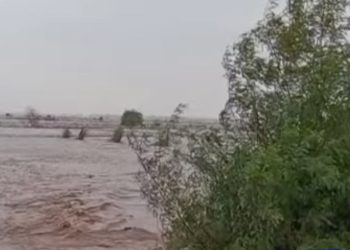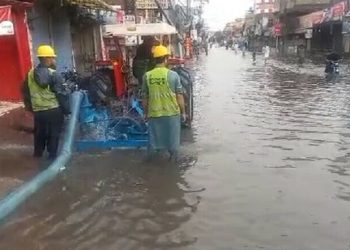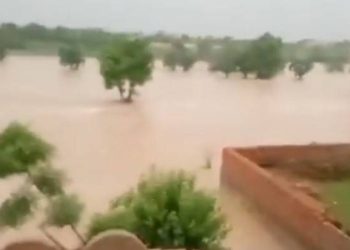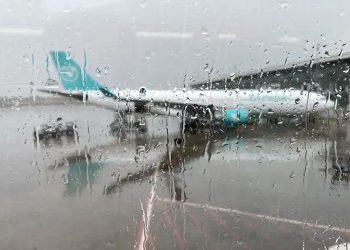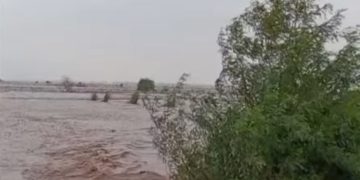Heavy monsoon rains have triggered severe urban flooding in Islamabad, Rawalpindi, and multiple parts of Punjab, leaving at least 43 people dead in the past 24 hours and prompting authorities to place the Pakistan Army on alert.
According to the Water and Sanitation Agency (WASA), the agency’s managing director has contacted the Pakistan Army’s 111 Brigade, with plans to call in military assistance if conditions worsen. A rain emergency has been declared, and WASA teams equipped with heavy machinery have been deployed in Rawalpindi’s low-lying areas.
Nullah Leh, a key waterway in Rawalpindi, saw a dramatic surge in water levels—rising to 22 feet at Katarian and 23 feet at Gowalmandi Bridge—forcing authorities to sound evacuation sirens in surrounding areas. The Pakistan Meteorological Department has forecast further rainfall, heightening concerns of additional flooding.
Rescue 1122 is on high alert, and residents have been urged to evacuate unsafe buildings and relocate to safer areas. Rainfall data showed 105mm in Kachehri, 95mm in Bokra, 90mm in Pirwadhai and Gowalmandi, 80mm in Katarian, and significant downpours in other parts of the twin cities.
Punjab Chief Minister Maryam Nawaz declared an emergency in multiple districts, calling the rainfall and flooding “unprecedented.” In a statement, she said government institutions are operating with full force and instructed local authorities to keep the public informed through sirens and announcements. She also urged citizens to follow safety protocols.
In Chakwal, a cloudburst brought 423mm of rain, inundating homes and prompting evacuation operations. The district administration said several small dams have overflowed, worsening the flood situation and affecting the historic Katas Raj Temple near Choa Saidanshah.
Flooding has also been reported in Jhelum, where rivers and canals overflowed following continuous rain. The local administration has sought army and aerial support to assist in rescue efforts. Sheikhupura and surrounding areas received 217mm of rain, adding to the widespread impact.
Dr. Rizwan, Secretary of Emergency Services, noted the collapse of around 310 roofs and 15 rain-related traffic accidents across Punjab during the monsoon season. Since June 16, nearly 90 rain-related deaths have been reported in the province.
The latest toll of 43 rain-related deaths includes 16 in Lahore, nine in Faisalabad, five in Sheikhupura, four each in Okara and Pakpatan, two in Chakwal, and one each in Mandi Bahauddin, Nankana, and Sahiwal. The Rawalpindi deputy commissioner has announced a one-day holiday in the district due to the emergency.
Elsewhere, Balochistan has also been hit by torrential rains. Provincial Disaster Management Authority (PDMA) Director General Jahanzeb Ghorezai reported 16 deaths, six injuries, and damage to at least 58 homes.
The National Disaster Management Authority (NDMA) confirmed that 54 people died and 227 were injured across Pakistan in the past 24 hours alone, raising the total monsoon death toll to about 180 since June 26. The agency warned of continued heavy rainfall in the coming days, with the risk of overflowing rivers, urban flooding, and more casualties.
The NDMA has urged residents in vulnerable areas, particularly around Nullah Leh, to prepare for immediate evacuation and avoid crossing rivers, bridges, and flooded roads during high water flow.











